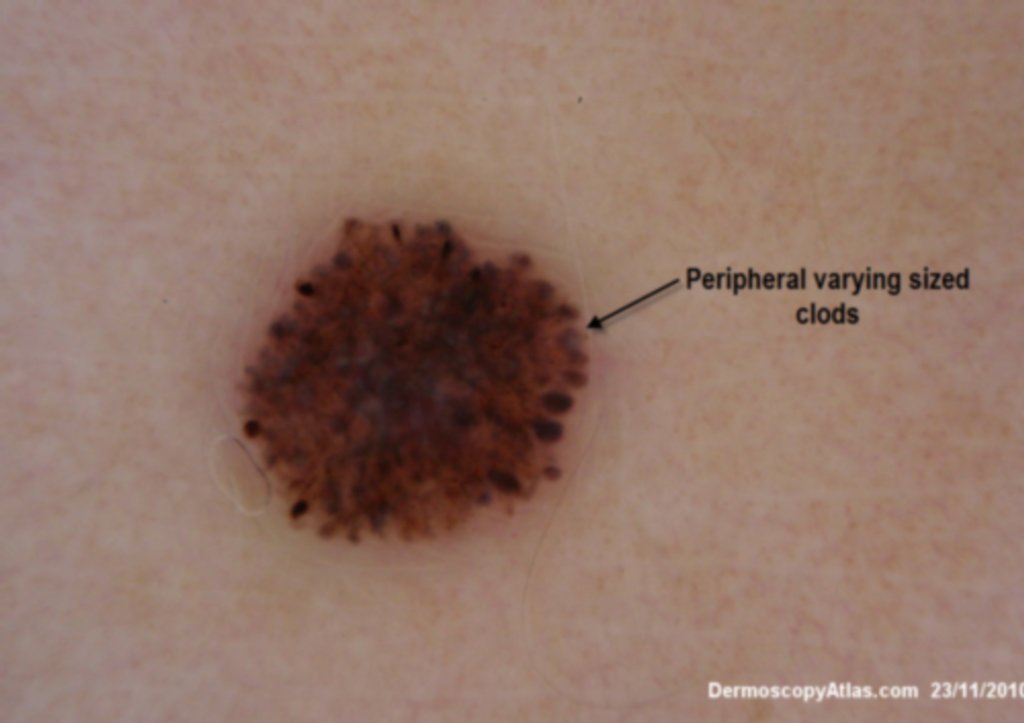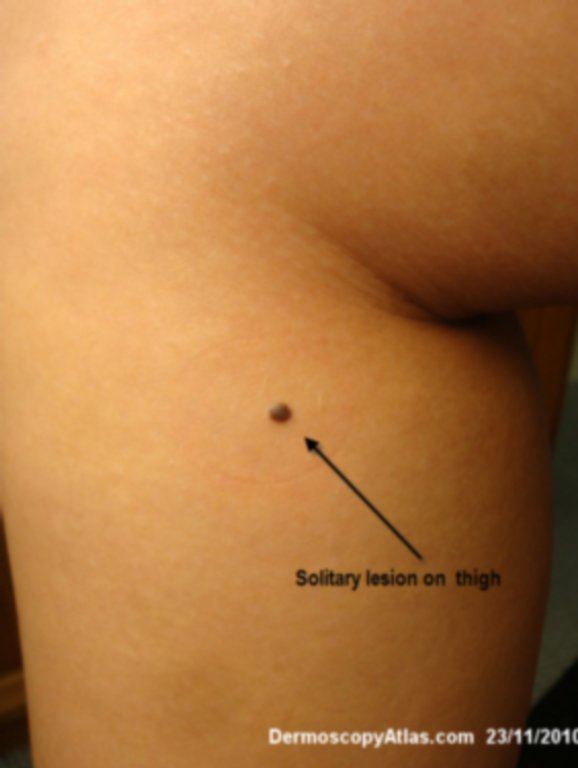

Site: Thigh
Diagnosis: Reed nevus
Sex: F
Age: 12
Type: Dermlite Polarised
Submitted By: Ian McColl
Description: Multiple peripheral clods
History:
This young lady grew this lesion in a period of 6 months. It was the only pigmented lesion on her skin. There was considerable parental anxiety and monitoring was not thought advisable. The varying sizes of the pweripheral clods was also a worrying factor but they were pretty evenly distributed around the periphery of the lesion which is not the feature of a melanoma.
The following is from the SCCANZ Blog by Dr Jean-Yves Gourhant on Spitz and Reed nevi.
Reed and Spitz are different entities which are undistinguable by dermoscopy when you have a starbust pattern (Spitz has many other faces).
Reed naevus seems to be more frequent in childhood.
Reed and Spitz will involute.
Sometimes (rarely) Spitz will be a Spitzoid melanoma, that is the problem.
Melanomas in childhood are unfrequent, and they are almost always pink lesions (the one I published 2 months ago).
Too many dark lesions (Reed) are excised without necessity in childhood.
Typical starbust pattern lesions like this one are quite adequatly monitored in childhood: they will involute (another post of mine about 3 months ago).
It is different in adult (even young adults) where excision is the best choice.
It is different for pink spitzoid lesions in childhood, which will be removed (for some authors depending of their size).
